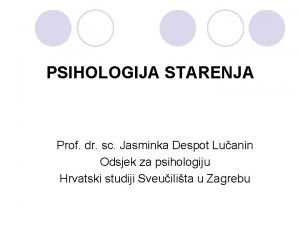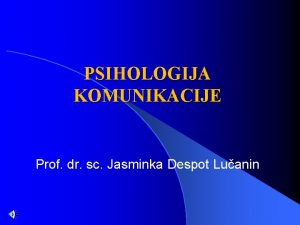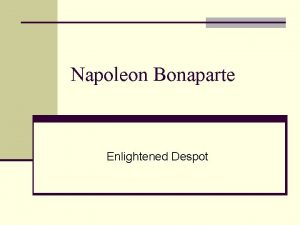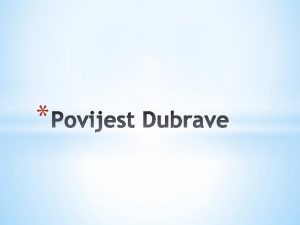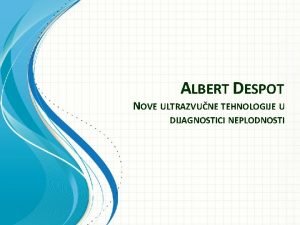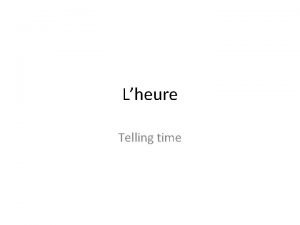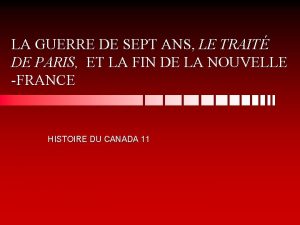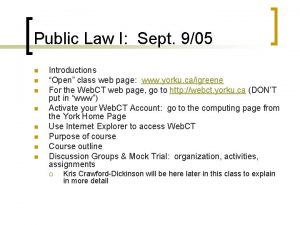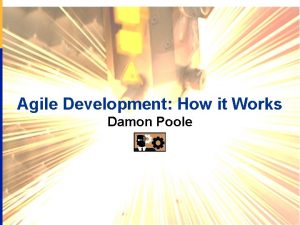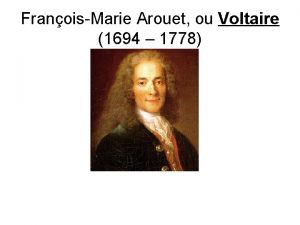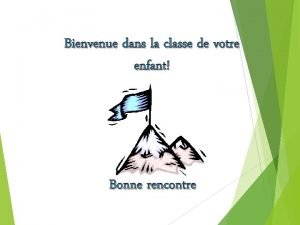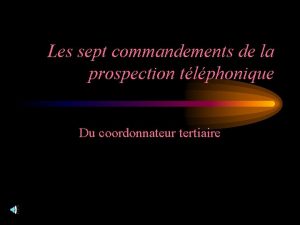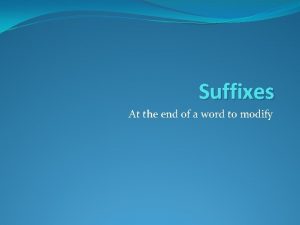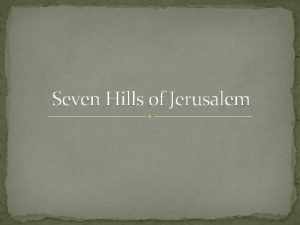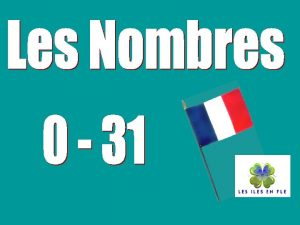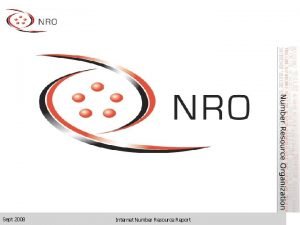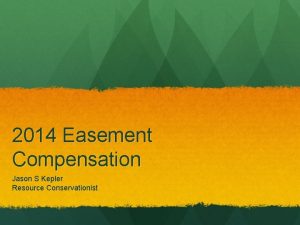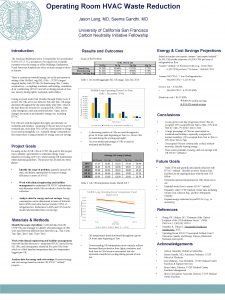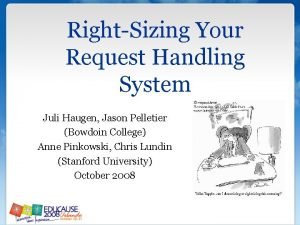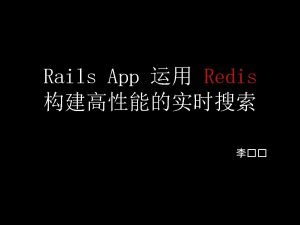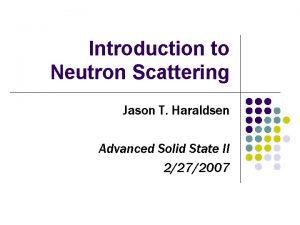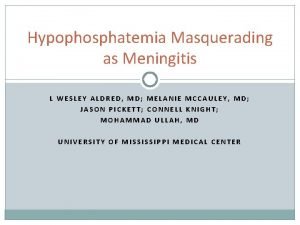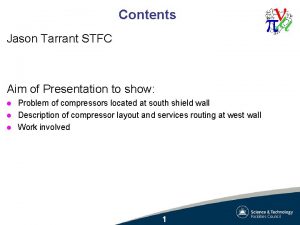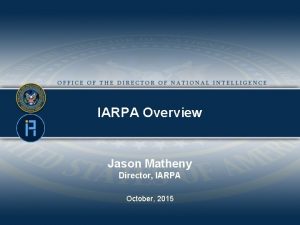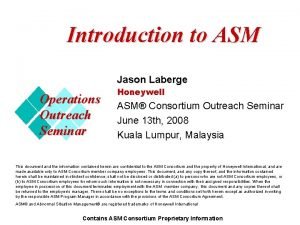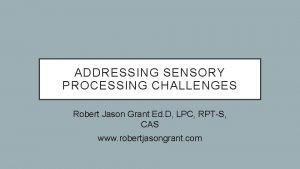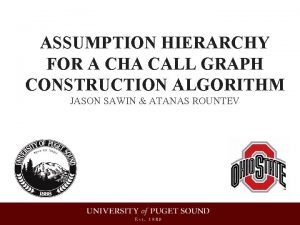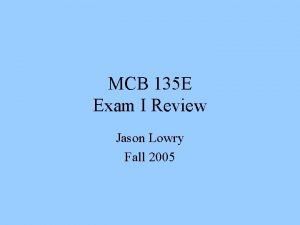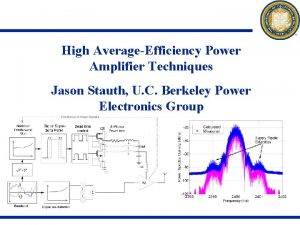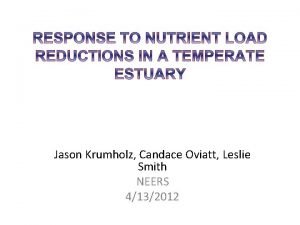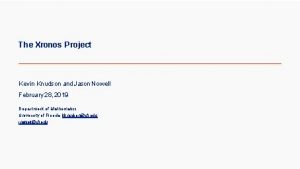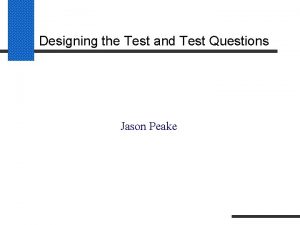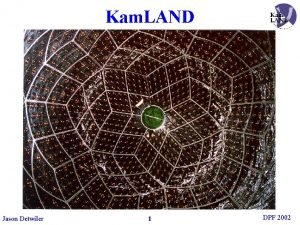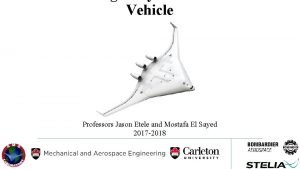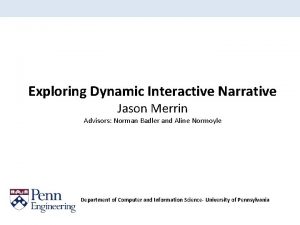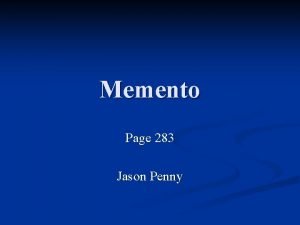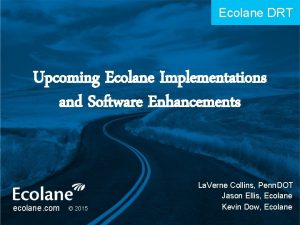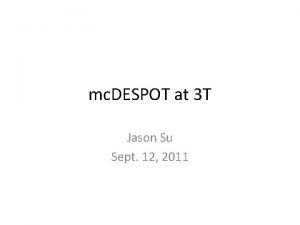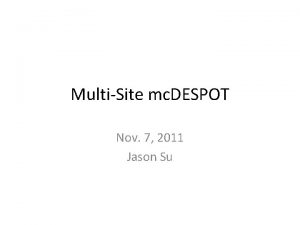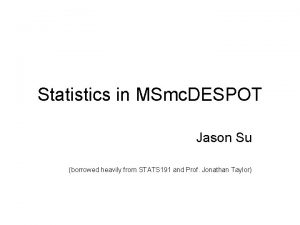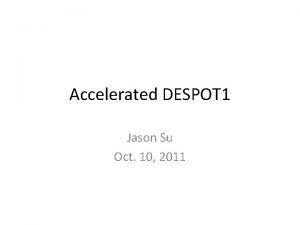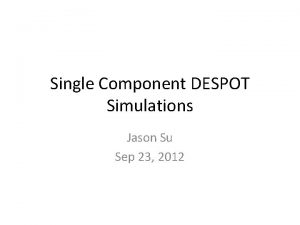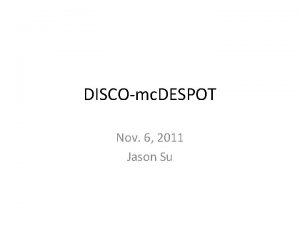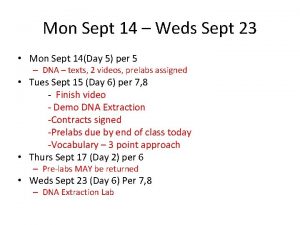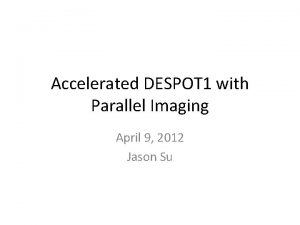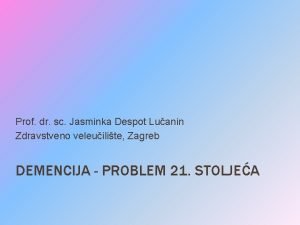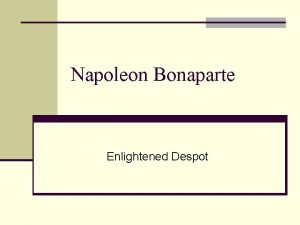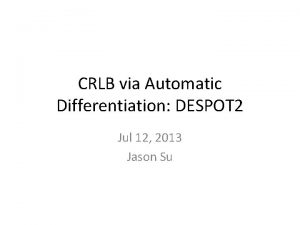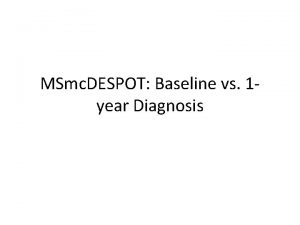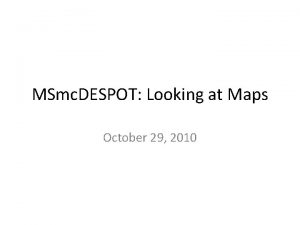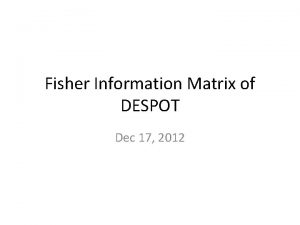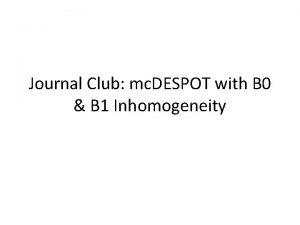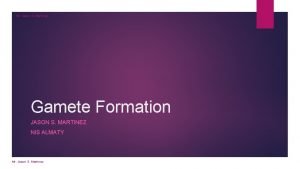mc DESPOT at 3 T Jason Su Sept










































































- Slides: 74

mc. DESPOT at 3 T Jason Su Sept. 12, 2011

mc. DESPOT • Two component mapping technique, signal is due to a fast and slow relaxing pool • Vitally depends on accurate knowledge of flip angle • Maps produced: – T 1 and T 2 for each pool – Fast volume fraction (also MWF), amount of a voxel that’s taken up by the fast pool – Off-resonance (B 0 map) – Residence time, how long water stay in its pool

Current Developments • 2 mm isotropic protocols for 8 ch and Nova-32 ch – 4 -6 min • 1 mm isotropic protocol for Nova-32 ch – ~30 minutes • Key remaining decisions: – Bloch-Siegert pulse – Acceleration method and factor • “DISCOPOT” – view sharing with variable flip angle data

Protocol Goals • Applicability to various studies: MS, AD, thalamus segmentation, etc. – Ease of use – Need to maintain 20 x and 22 x versions of PSD • Future compatibility for 7 T • Robustness, especially with B 0 and B 1 inhomogeneity • Post-processing needs to be well packaged

Protocol Outline 1. 2. 3. 4. 5. 9 SPGR angles up to 18 deg. IR-SPGR for DESPOT 1 -HIFI (B 1 map) Bloch-Siegert B 1 map 9 SSFP angles with phase cycling up to 72 deg. Clinical/structural – – MPRAGE for WM/GM segmentation FLAIR for lesion segmentation DTI for tract-based analysis? Imports from the ADNI protocol? 6. AFI?

Hard Pulses • Bloch-Siegert B 1 maps do not account for excitation slab profile • Pulses that were used at 1. 5 T can no longer reach high enough angles at 3 T • Solution: hard pulses – No slab profile – Lower max RF amplitude allows higher angles – Enables shorter TR -> faster acquisition – Our acquisitions are almost always whole-brain anyway (the major selling point of mc. DESPOT)

Testing • Phantom – Agar Gel Sphere: only good for looking at parallel imaging comparisons – Half & Half Cream Cylinder: water and fat emulsion provides multi-component signal • Allows us to test the performance of our B 1 correction • Can we build one with B 1 inhomogeneity as severe as 7 T brain? • Fast volume fraction map has shown ability to estimate fat percentage • In vivo – Repeatability study – 2 scans sessions already performed on 2 volunteers, a variety of accelerations for each

B 1 Maps • Bloch-Siegert – Complex – Pulse width • 0. 5 ms pulse width: 56 deg. max, TR = 450 ms • 1 ms pulse width: 75 deg. , TR = 450 ms • 2 ms pulse width: 112 deg. max, TR = 500 ms • DESPOT 1 -HIFI with ASSET-2. 5 • Processing: – Maps cannot be registered – Bloch-Siegert map turned into a “kappa map” (flip angle scale factor) by normalizing by the mean B 1 over the brain

DESPOT 1 -HIFI

Bloch-Siegert: 2 ms

Bloch-Siegert: 1 ms

Bloch-Siegert: 0. 5 ms

Bloch-Siegert (2 ms) – DESPOT 1 -HIFI

Bloch-Siegert (2 ms) – DESPOT 1 -HIFI

Bloch-Siegert (1 ms) – DESPOT 1 -HIFI

Bloch-Siegert (0. 5 ms) – DESPOT 1 -HIFI

B-S (1 ms) – B-S (2 ms)

B-S (1 ms) – B-S (2 ms)

B-S (0. 5 ms) – B-S (2 ms)

B-S (0. 5 ms) – B-S (2 ms)

Comments • Normalization of B-S needs to be fixed • In general, I don’t trust HIFI very much but would rather see these corrections in H&H phantom • 0. 5 ms pulse width for B-S produces a L/R shifted homogeneity pattern compared to 1 ms and 2 ms

Parallel Imaging • Parallel imaging artifacts on mc. DESPOT maps? • How much acceleration can we use? • In vivo – – – ARC-2 x 2 (baseline) ARC-2. 5 x 2. 5 (reasonable) ARC-3 x 2 ASSET-2. 5 (reasonable) ASSET-4 (aggressive) • Images are registered to the ARC-2 x 2 baseline after proc. • Some attempts at a g-factor map but only based on collected data, should use fully sampled raw P-files – Want to determine slice and acquisition orientation effects

ARC-2 x 2: SPGR, 12 deg.

ARC-2. 5 x 2. 5: SPGR, 12 deg.

ARC-3 x 2: SPGR, 12 deg.

ASSET-2. 5: SPGR, 12 deg.

ASSET-4: SPGR, 12 deg.

ARC-2 x 2: T 1

ARC-2. 5 x 2. 5: T 1

ARC-2. 5 x 2. 5: T 1

ARC-3 x 2: T 1

ARC-3 x 2: T 1

ASSET-2. 5: T 1

ASSET-2. 5: T 1

ASSET-4: T 1

ASSET-4: T 1

Comments • Registration issues need to be re-evaluated – Ideally resample same k-space data • Higher ASSET acceleration biases T 1 upwards • Parallel imaging artifacts are subtle on T 1 maps – This is a bad thing, hard to figure out what voxels are corrupted

ARC-2 x 2: MWF

ARC-2. 5 x 2. 5: MWF

ARC-2. 5 x 2. 5: MWF

ARC-3 x 2: MWF

ARC-3 x 2: MWF

ASSET-2. 5: MWF

ASSET-2. 5: MWF

ASSET-4: MWF

ASSET-4: MWF

Comments • ASSET may skew MWF distribution downwards, no long symmetric error distribution • MWF is more sensitive than T 1 to recon changes • ARC-3 x 2 gives the closest match to maps produced by ARC-2 x 2

1. 5 T: MWF

3 T: ASSET-2. 5 HIFI MWF

MWF Difference

3 T: ARC-2 x 2 BS 1 ms MWF

MWF Difference

Comments • Values in the corpus callosum have changed the least • The peak in 0 s is due to included CSF which has very low MWF in both • Systematic overestimation of MWF at 3 T, this has been observed in mc. T 2 studies as well • A global bias correction for B 1 has been suggested at 1. 5 T (Aviv Mezer) • B 1 inhomogeneity is not severe in this example

1. 5 T: T 1

3 T: ASSET-2. 5 HIFI T 1

3 T: ARC-2 x 2 BS 1 ms T 1

Comments • This indicates that there’s something going very wrong • The T 1 values are shortening at 3 T, which is incorrect

DISCOPOT • View sharing of k-space between a sequence of angles • Fully sampled center of k-space, under sampled outer • Outer k-space pattern is pseudo-random but complementary with shared angles • Mixing scheme: – AB 1. *fa_{i} + B 2. *fa_{i-1} + B 3. *fa_{i+1} – Edge cases are slightly different • Tested on raw SPGR P-file data with fa 1 -13 • Many angles collected with the goal of mc. DESPOT in mind

DISCOPOT Sampling

Scanner Recon, Fully Sampled

offline. recon, Fully Sampled

offline. recon, Fully Sampled

offline. recon, DISCOPOT

offline. recon, DISCOPOT

Scanner Recon, Fully Sampled

offline. recon, DISCOPOT

offline. recon, DISCOPOT

DESPOT: T 1

DISCOPOT: T 1

DISCOPOT: T 1

DISCOPOT-Alternate: T 1

DISCOPOT-Alternate: T 1

Conclusions • B-S 1 ms seems like the best choice of the ones seen here • ARC 3 x 2 is promising • DISCOPOT view sharing is a viable way to accelerate the acquisition for DESPOT 1 – Further testing required for mc. DESPOT

Further Work • Collect fully sampled mc. DESPOT P-files – Create g-factor maps – Apply parallel imaging on the P-files to do a more direct comparison of each • Phantom creation to examine B 1 correction in fast volume fraction maps • DESPOT and compressed sensing
 Psihologija starenja
Psihologija starenja Enlightened despot catherine
Enlightened despot catherine Enlightenment ideas
Enlightenment ideas Jasminka despot lučanin
Jasminka despot lučanin Enlightened absolutism def
Enlightened absolutism def Napoleon despot
Napoleon despot Sandra despot
Sandra despot Define enlightened absolutism
Define enlightened absolutism Jasminka despot lučanin
Jasminka despot lučanin Albert despot
Albert despot Le blaireau sans gêne poésie
Le blaireau sans gêne poésie Sept heure moins le quart
Sept heure moins le quart Deportes
Deportes I sept
I sept Ecrivez les sept jours de la semaine
Ecrivez les sept jours de la semaine Accu poole sept
Accu poole sept La guerre de sept ans
La guerre de sept ans Sept comme setteur questionnaire
Sept comme setteur questionnaire Sept commandements
Sept commandements Sept prefix words
Sept prefix words Cities built on seven hills
Cities built on seven hills Cnn 10 september 4
Cnn 10 september 4 Un, deux, trois, quatre, cinq, six, sept, huit, neuf
Un, deux, trois, quatre, cinq, six, sept, huit, neuf Sept
Sept Jason kepler
Jason kepler Jason panter
Jason panter Jason speyer
Jason speyer Jason lang md
Jason lang md Jason whittle unisa
Jason whittle unisa Jason statham name
Jason statham name Jason sharman cambridge
Jason sharman cambridge Jason vallone wife swap
Jason vallone wife swap Jason vincent scarpace
Jason vincent scarpace Sadie is so fearful of being overwhelmed
Sadie is so fearful of being overwhelmed Total safety culture
Total safety culture Jason haugen
Jason haugen Jason lee twitter
Jason lee twitter Jason baumgartner
Jason baumgartner Jason freewalt
Jason freewalt Jason adsit
Jason adsit Jason t. haraldsen
Jason t. haraldsen Jason lillis
Jason lillis Jason matusow
Jason matusow Jason schachter
Jason schachter Jason lawrie
Jason lawrie Jason aldred md
Jason aldred md Stfc pmc
Stfc pmc Jason covarrubias
Jason covarrubias Jason schipper
Jason schipper Jason lundquist
Jason lundquist Jason coughlin
Jason coughlin Jason matheny
Jason matheny Asm consortium
Asm consortium Dr robert jason
Dr robert jason Jason perry rcc
Jason perry rcc Jason sawin
Jason sawin Neural groove
Neural groove Jason power amplifier
Jason power amplifier Jason krumholz
Jason krumholz Jason hajduk santa cruz
Jason hajduk santa cruz Jason parsons liverpool
Jason parsons liverpool Jason gaskell
Jason gaskell Richard chase film
Richard chase film Jason nowell uf
Jason nowell uf Knowledge skill
Knowledge skill Jason ryba
Jason ryba Jason chin principal
Jason chin principal Jason pearson diet
Jason pearson diet Jason detwiler
Jason detwiler Jason etele
Jason etele Jason peacock unt
Jason peacock unt Jason merrin
Jason merrin Jason penny
Jason penny Ecolane drt
Ecolane drt Jason lucas southwell
Jason lucas southwell
